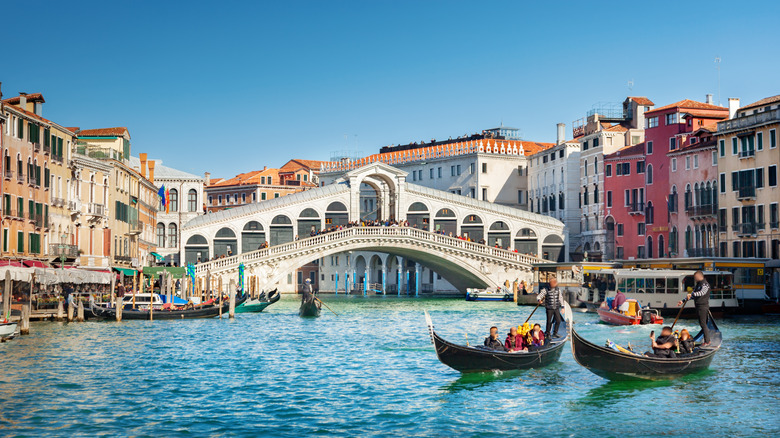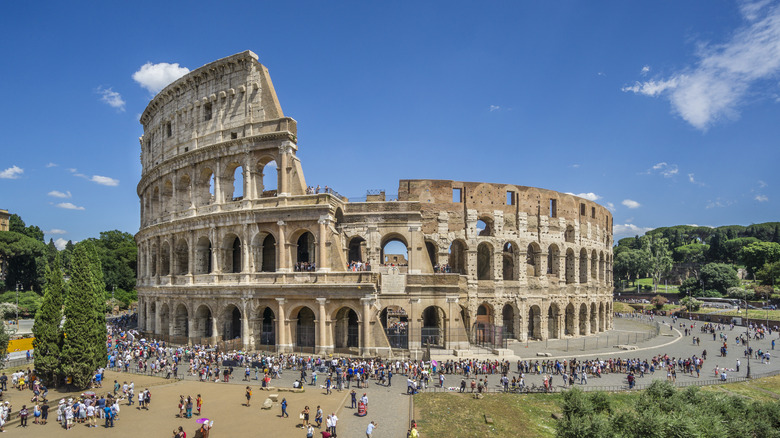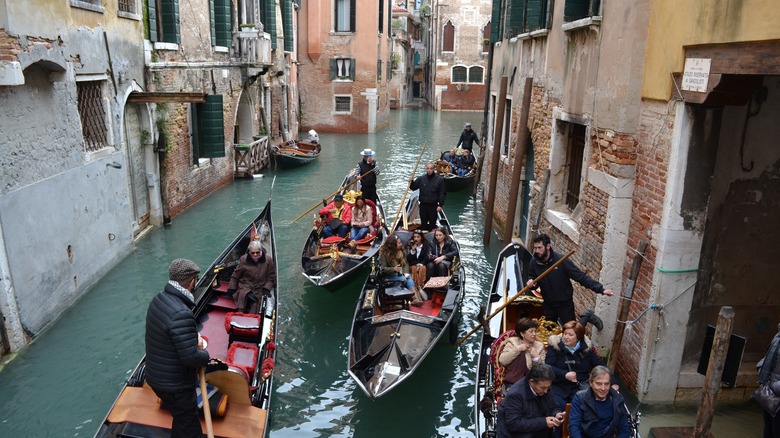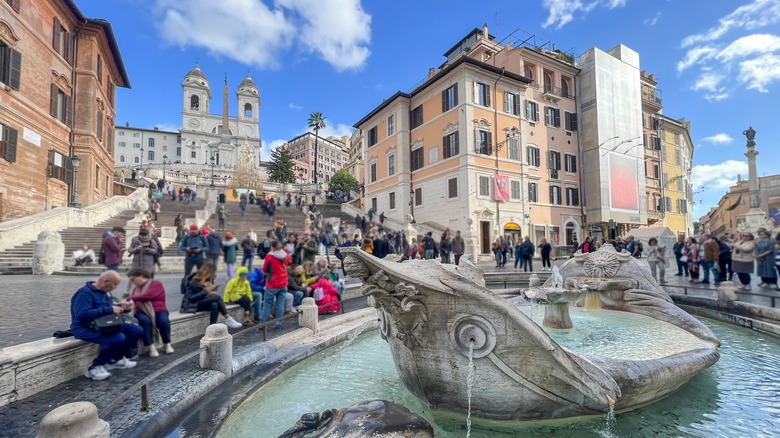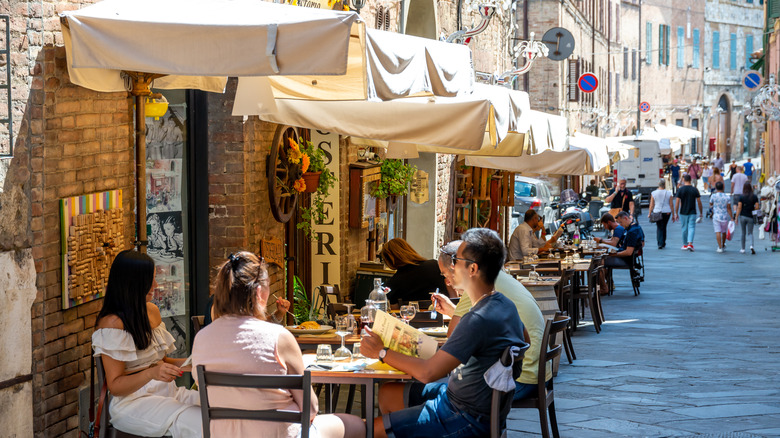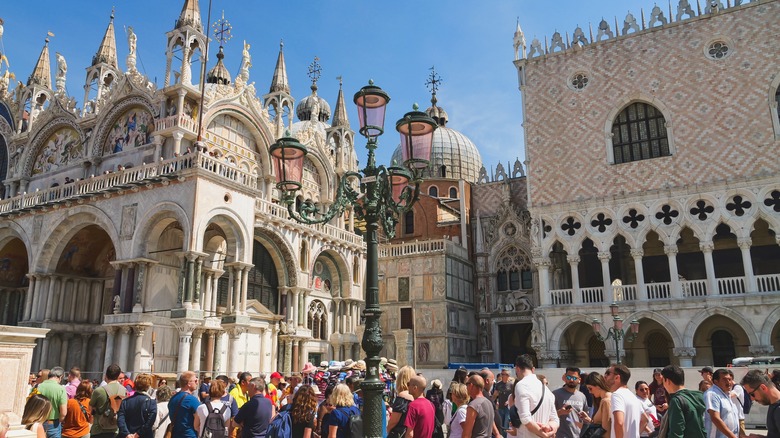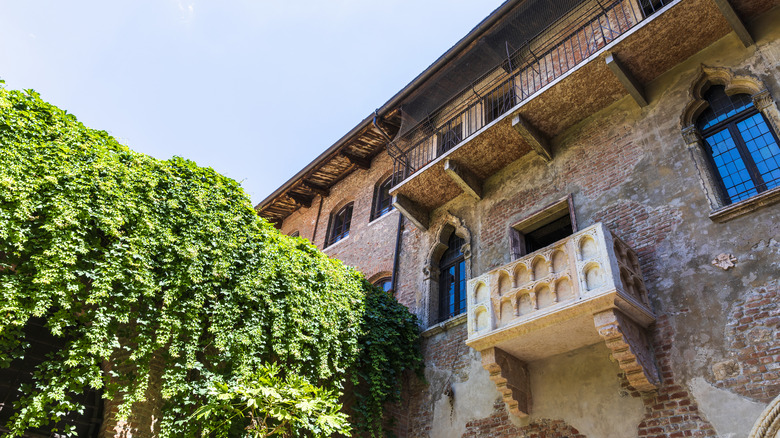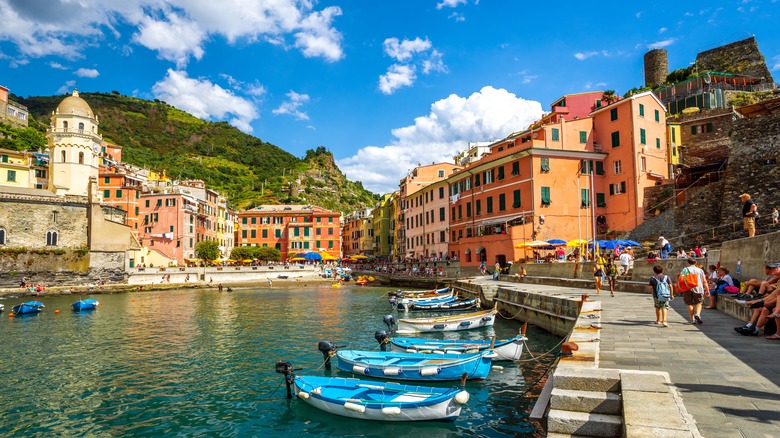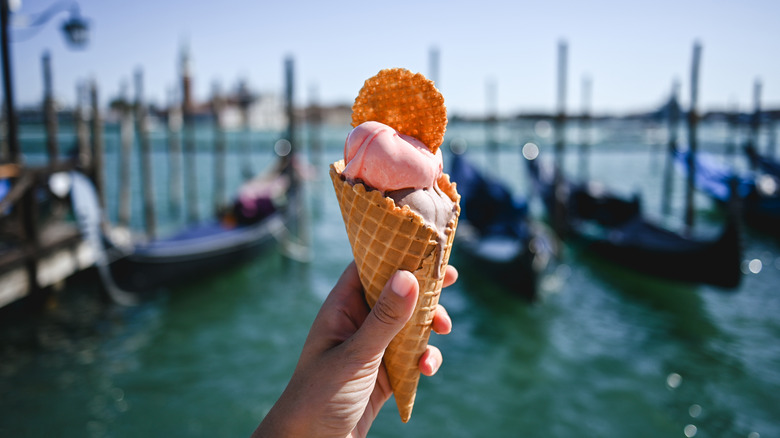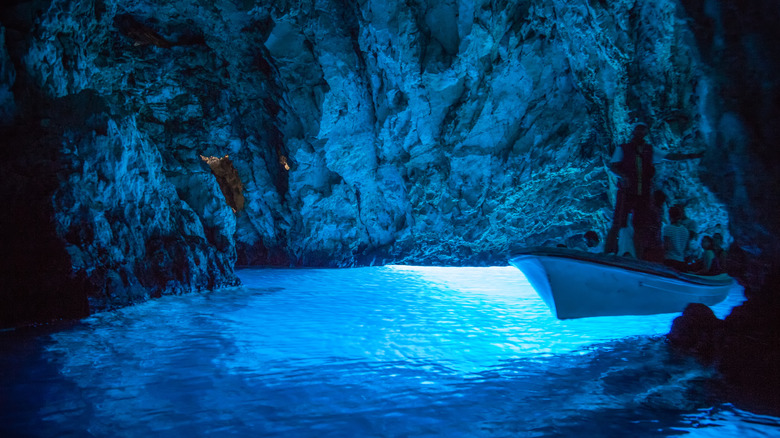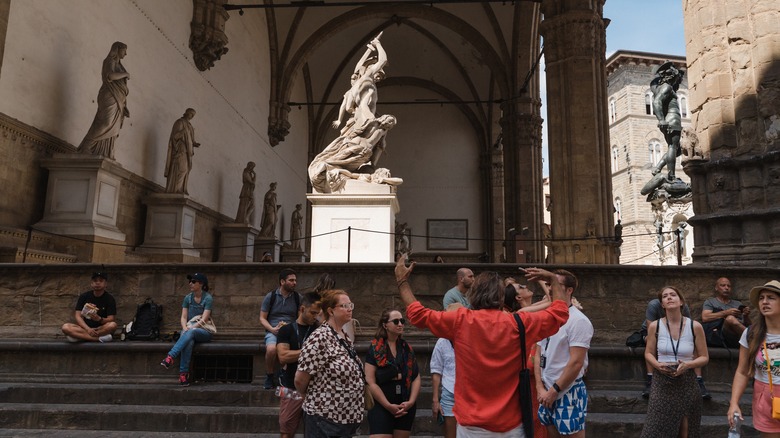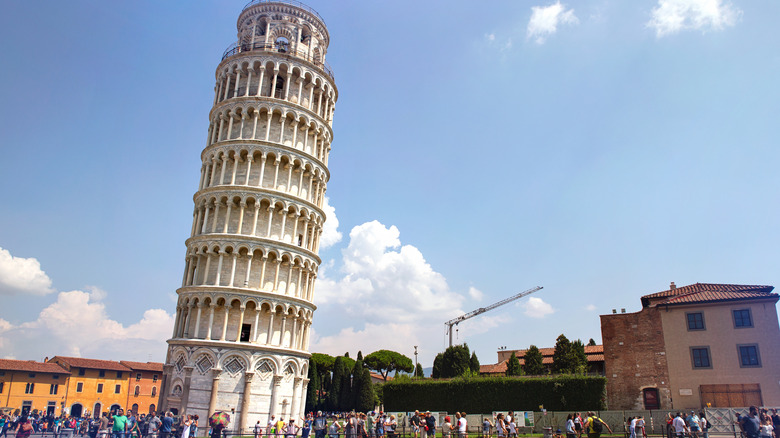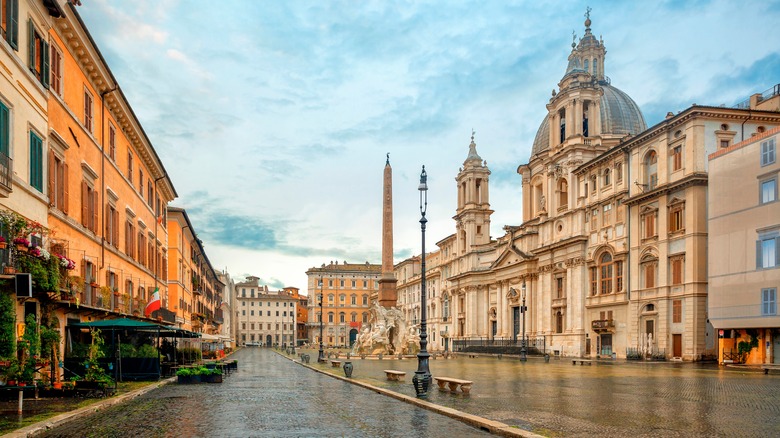Skip These Overrated Tourist Traps When Visiting Italy, According To Travelers
We may receive a commission on purchases made from links.
As one of the world's top tourist destinations, Italy enjoys a reputation in the travel community few other destinations can match. With a charming Mediterranean coastline, breathtaking historical sites, and a gastronomic feast of your dreams, the European country has a clear appeal. At the same time, these desirable features have resulted in Italy becoming an almost too popular for getaways. Tourism in the country has boomed like never before, with CNBC reporting a surge in visitor numbers up to 60 million in 2023.
Between the flood of international travelers and Italy's efforts to preserve its authenticity, a lot of famous spots in the country have turned into unfortunate tourist traps cashing in on their trendiness. Reddit and Tripadvisor are full of negative reviews for once-exclusive tourist sites — like the picturesque villages of Cinque Terre or the hidden waters of the Blue Grotto — that they deem overrated. These destinations, people say, have gotten increasingly difficult to enjoy, due in large part to overcrowding and false expectations set by social media. Based on accounts from visitors, you wouldn't miss much by skipping these tourist traps in Italy.
The Colosseum
It may seem improbable to suggest that the Colosseum is an overrated tourist trap. However, a considerable chunk of the travel community has reached this conclusion. Notwithstanding the historic significance of the amphitheater that has stood in Rome for centuries, many tourists have complained that the monument fell short of their expectations. Flagging it as an "unpopular opinion," a Reddit user wrote: "I thought the inside of the Colosseum was underwhelming."
The abundance of crowds doesn't make things any easier. The Colosseum is easily one of Italy's most popular attractions and has an annual footfall that runs into the millions (per Statista). You can imagine the inevitable rush that comes with the experience, which a first-person account in Business Insider testified to: "I wasn't expecting the Colosseum to feel so cramped, loud, and stressful to get around." Many visitors suggest the nearby Roman Forum and Palatine Hill as rewarding alternatives to the Colosseum.
A more evident tourist trap at the Colosseum centers on the scammers who dress up as gladiators and lurk around the monument, luring in tourists for pictures. This common tactic may begin as a free photo op but usually ends with these costumed swindlers demanding exorbitant amounts of money. If you refuse to pay, they may even get aggressive.
Gondola rides in Venice
Taking a ride on a gondola might seem like an authentic Venetian experience, given that the use of these traditional boats goes back centuries. But considering the commercialization the gondola industry has undergone over the past few years, many travelers are of the opinion that this trade — which originally centered around utility-based transportation — is little more than a tourist trap.
To begin with, Venice's gondola rides aren't exactly budget travel-friendly. The standard price for a single half-hour trip falls in the range of $100 and up during a busy tourist season that, aside from soaring rates, will guarantee heavy crowds. Floating through the city's canal networks with multiple gondolas saturated with tourists hardly sounds like the romantic escape many people go to Italy for. A Redditor disapprovingly attested, "The canals are so crowded with gondolas that it was not that enjoyable."
While travelers agree that a gondola ride can offer unique perspectives of the city that cannot be found by exploring it on foot, the price point and long lines put many off. A popular alternative to the gondola is a ride aboard a traghetto (or a local ferry) across the Grand Canal. Not only does it cost less, it is an authentic local experience that allows tourists to travel the city like the Venetians do.
Spanish Steps
The Spanish Steps are among the world's most famous stairs, but many tourists are of the opinion that there is nothing extraordinary about them. Sure, the iconic landmark that rises up at the Piazza di Spagna boasts of a fascinating history and has been a cultural symbol for centuries. While their significance cannot be overstated, it may be difficult to appreciate the steps' appeal as a standalone tourist spot — especially for people expecting some kind of visual marvel.
Though the steps can be hard to miss given how excessively they teem with tourists, particularly during high season, one Reddit user claimed that they failed to take notice of them right away. "I actually missed the steps multiple times and said to my travel buddy 'hey the steps are nearby here somewhere we have to find them' and she says 'they're right there'. I was FLOORED by how underwhelmed I was," they wrote.
Some tourists also see little sense in specifically visiting the Spanish Steps or planning their itinerary solely around them, saying that people exploring Rome on foot are bound to end up at the steps at some point or another. Combining the steps with nearby attractions, like the Keats-Shelley House or the Pincian Hill viewpoint, can make for a more productive schedule.
Restaurants with multilingual menus
When in Italy, everyone wants to eat as the Italians do. The country's cuisine is a global treasure, after all. Lured by the pull of options and aesthetics, however, tourists often end up at restaurants an average Italian wouldn't touch with a bargepole. These eateries — many of which can typically be found in close proximity to tourist sites — will flaunt all the Italian staples (read: pizza or pasta) tourists are ecstatically seeking out but often fall short of Italy's true culinary experience with overpriced and inauthentic food.
An easy catch is the menu. If a joint offers you a menu containing multiple languages, run in the opposite direction. Locals don't need explanations about their food in languages other than Italian (if at all), so it's a safe bet that a place with such an offering is catering to a tourist crowd. Another way around such tourist traps is doing a little research about the cuisine beforehand to get an idea about what to expect on an authentic menu.
In an article for Insider, Italy-born writer Asia London Palomba also cautioned against menus that display photos of dishes and eateries with deliberately stereotypical decor or staff actively waving people in. "Instead of eating at these places just because they're near a must-see site, I recommend buying a takeout pizza or sandwich and sitting on a bench or on the steps of a fountain in a square, like we Romans do," she wrote.
St. Mark's Square
St. Mark's Square, known to locals as the Piazza San Marco, is held in high regard as one of Venice's most famous neighborhoods. The status it is accorded might make it sound like some kind of extraordinary curiosity, but many travelers have poked holes in that popular belief, with the foremost observation being that the square is extremely busy and very dirty. "Way too busy and lack of facilities and services for tourists. Zero toilet and bin. People dumping drinks bottles," one Tripadvisor review stated.
During Venice's flooding season, things get considerably worse, with visitors having to wade through the piazza in ankle-deep water. Another user pointed out the rampant commercialization around the piazza: "Gullible tourists are paying extortionate prices for sandwiches and drinks in this square." Sure, the history attached to the piazza might transport you back in time and have you marveling at the fact that you are walking in a locality dotted with constructions that have been around for centuries. Several of these, like St. Mark's Basilica and the Doge's Palace, could make for worthwhile visits but only if you are willing to brave the crowds.
Juliet's house
Juliet's house, locally known as Casa di Giulietta, is perhaps one of the most enduring symbols of not just Italy's reputation as a romantic destination but the idea of love itself. And yet, this humble-looking residence in Verona — which is said to belong to the legendary lover from William Shakespeare's tragic play "Romeo and Juliet" — fails to impress many tourists. One of the most obviously unfavorable aspects is excessive crowding, which is a pain point across the most popular tourist spots in Italy.
When you brave the long lines and make it inside the house, there is apparently little information about what you are actually looking at. Then again, the lack of historical or literary markers is owed to the fact that Juliet's house — and in particular the balcony, which was reportedly constructed in the 20th century – is a recreation of fiction and merely builds on the legacy of the timeless love story.
That hasn't deterred people from indulging in hyped tourist customs like rubbing Juliet's statue to find luck in love, a practice that has repeatedly caused damage to the structure. From graffiti on the walls to photo-crazed crowds, the fanfare has also dampened a lot of the charm associated with the place for some visitors. One Tripadvisor reviewer, who seemed to be massively put off by the balcony, wrote, "Definitely the tackiest tourist attraction I've ever experienced."
Cinque Terre
The Cinque Terre coastline, with its sapphire waters and colorblocked houses perched atop cliffs, is one of the most quintessentially Italian vistas that draws tourists to the country season upon season. A record 4 million visitors made their way there in 2023, according to The Guardian. While the region's ever-burgeoning popularity is a testament to its beauty, the heavy influx of tourists has rendered it an oversaturated tourist trap.
"The villages and beaches are overcrowded and dirty, the infrastructure unfit for coping with the crowds in what must be after all a rich region," a Tripadvisor reviewer lamented. "Such a coastline deserves better than this prehistoric resort management." It is not just visitors who have called out the effects of over tourism in this UNESCO-classified cluster of villages though. Residents are equally vocal and local authorities have taken steps in certain tourist spots to limit overcrowding.
The views looking over the Mediterranean are, no doubt, as breathtaking as ever. But there is no guarantee you will be able to enjoy them in peace. As a Reddit user wrote: "Italy in June is hot and crowded. The Cinque Terre will be completely overrun with tour groups, being led by a guide with a megaphone. All of them tripping over each other to take a selfie." Between the high prices and photo-obsessed mobs all around, this destination is not for everyone.
Inauthentic gelato
Did you really even visit Italy if you didn't indulge (or rather overindulge) in gelato? It is a quintessentially Italian experience to enjoy this local frozen dessert without counting the calories that come with it. The only hitch is that there are several inauthentic gelato parlors posing as the real deal that tourists could end up at. These usually fringe major tourist destinations where the footfall is heavy thanks to many unsuspecting first-time tourists.
A Redditor who visited a gelateria near the iconic Trevi Fountain alleged that they were nearly scammed by a vendor who tried to serve them less than what they paid for. "I noticed similar tactics at other gelato shops, where they would try to shortchange tourists or use other underhanded methods to extract more money," they stated. Reviewers on Tripadvisor have also called out other places across Italy that overcharge for tiny portions of gelato.
Knowing how to spot an authentic gelateria can help you steer clear of gelato-related tourist traps. Italy-based food blogger Coral Sisk offered a good rule of thumb: "No to big, neon-colored mounds," she told Viator, warning against artificially enhanced gelato and flavors that are too kitschy. "There should be no bright colors where bright colors do not exist in nature." True gelato is densely packed, boringly colored, and freshly made.
Blue Grotto
In pictures, the Blue Grotto in Capri seems like an otherworldly place that pulses with magic. In reality, things are apparently not as exciting. Many travelers don't come out of the glowing sea cave as impressed as they were going in. One of the foremost observations that disappointed tourists have made about the Blue Grotto is that they get to spend very little time actually inside the cave. A large part of the experience involves switching from boat to boat and then bobbing outside the cave to await your turn to enter. Witnessing the natural marvel of the ethereal colors inside unfolds over a scant a few minutes.
A Reddit user pointed out another downside: "It is really uncomfortable being crammed into such a tiny boat with 4 other people." One complaint about the Blue Grotto that has persisted for years concerns its tipping culture, which many tourists have deemed unreasonable. They point out that the individuals rowing people across the cave often demand extra cash in addition to ticket prices, sometimes in ways that might turn "intimidating," to quote one Tripadvisor reviewer. That said, on a thread discussing possible extortion at the grotto, many Redditors testified that tipping was not necessary.
Unofficial tour guides
A tour guide or a group tour can often be the most educational (not to mention convenient) way to get to know a place — especially a destination like Italy, with its surplus of historic sites. Tourists know this, but so do local scammers. Unofficial tour guides have become a major tourist trap in Italy, which is already overrun with a plethora of other scams — from the 'free' roses you should never accept to inflated fares in non-legit taxis. It is common for uninformed visitors to fall prey to these schemes, which are usually aimed at extorting money without actually delivering a quality service.
People who have traveled around Italy frequently caution against a scam that centers on individuals posing as guides — possibly without any legitimate authentication — on the lookout for customers they can swindle. Tourists have shared endless accounts of being deceived by such "guides," who may quote low tour prices but end up charging extra by way of concealed costs. Or they may do a superficial job of showing you around. As one Quora user wrote: "Their only motivation is to get you in and out as fast as possible and go find another sucker." Skip this tourist trap in favor of advance bookings via a licensed travel company or audio guides.
Leaning Tower of Pisa
The Leaning Tower of Pisa is an architectural marvel to many. Unfortunately, a large number of visitors have identified the massive attraction as one of Italy's most overhyped tourist traps, such as the Redditor who described it as little more than "an overrated stack of stone leaning at a slight acute angle." A bell tower that dates back to the 12th century, the construction's most obvious pull is its noticeable tilt. That has apparently not been enough to impress a faction of tourists, who claimed to have found the tower underwhelming.
"Visited this site in an absolute madness of people. Hundreds queuing for hours to climb the tower (just 55 meters) which is indeed leaning but for the rest very overrated," a Tripadvisor review mentioned. Multiple travelers who were left disappointed by the attraction found greater value in visiting the nearby Pisa Cathedral and other spots around the city of Pisa. However, lots of tourists only come to the area to see the tower. Expect a long wait if you plan to climb to the top.
Methodology
To put together this list of overrated tourist traps in Italy, we took stock of the buzz surrounding the county's attractions in travel communities. We searched through various public opinions on popular forums like Tripadvisor, Reddit, and Quora, where travelers get candid about the good, the bad, and the ugly of a destination. Some of the choices we've featured might seem unusual or even outright bizarre. However, we felt it was important to highlight these opinions, which offer an alternative perspective on mainstream attractions.
The primary search keyword we looked for was "overrated" — a term that points toward the general popularity of these places and also serves as a good reminder of the subjectiveness of the takes presented in this article. In addition to public reviews, we researched extensively about the history of the places mentioned and got the latest scoop on them from news sites like The Guardian. For additional value, we also incorporated suggestions from experts who are knowledgeable about Italy.
